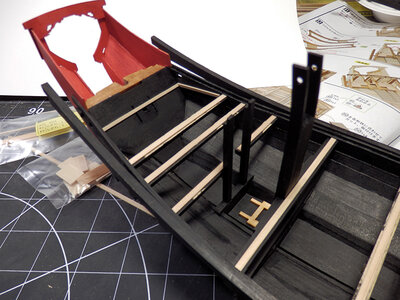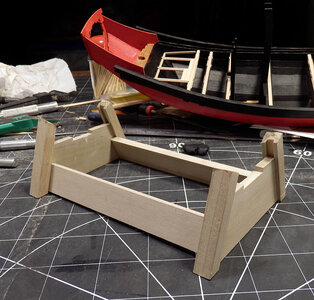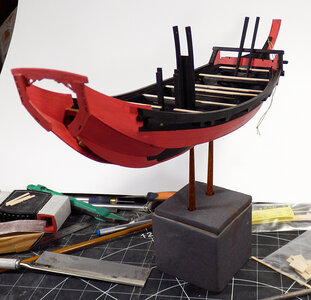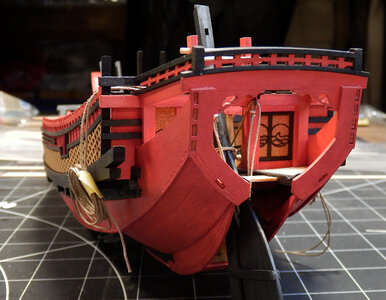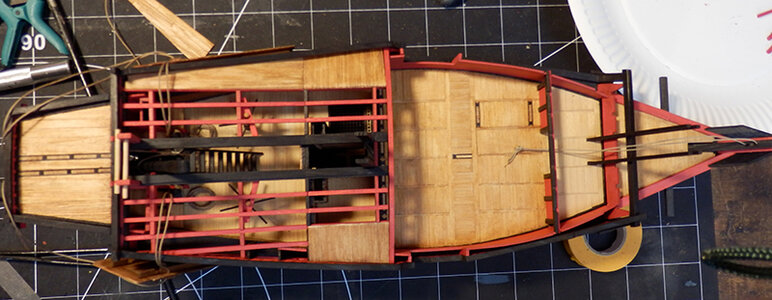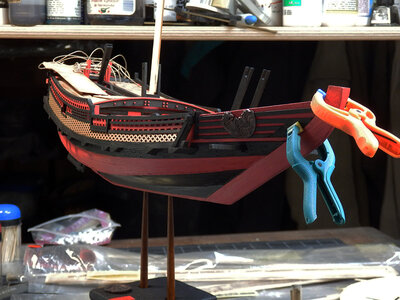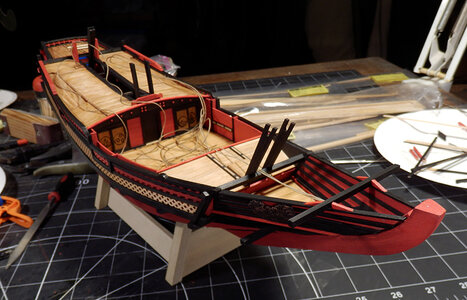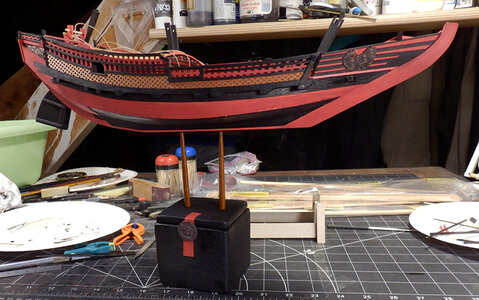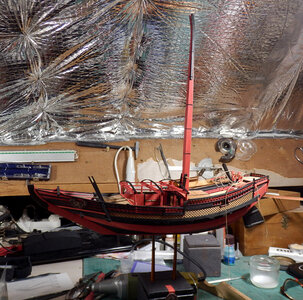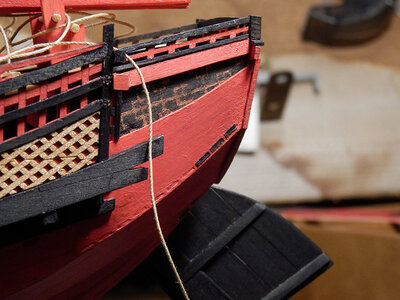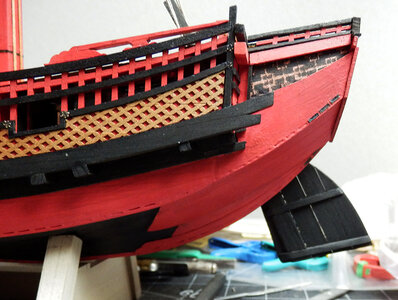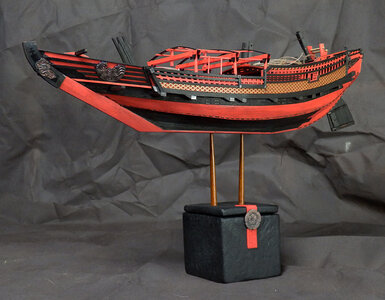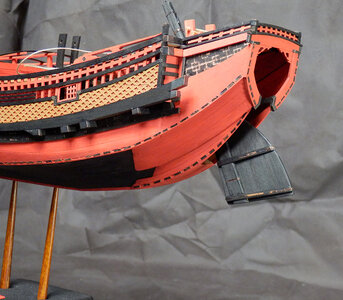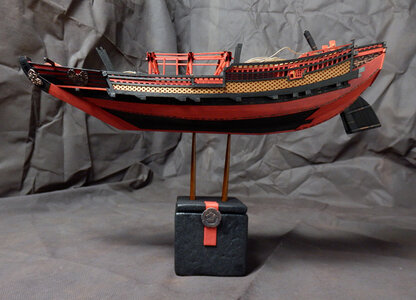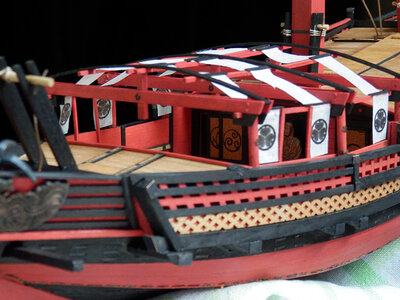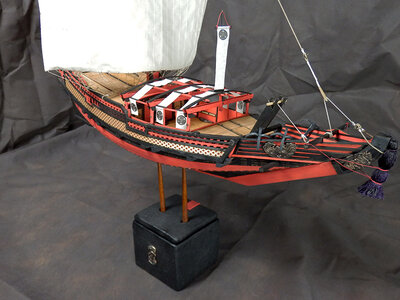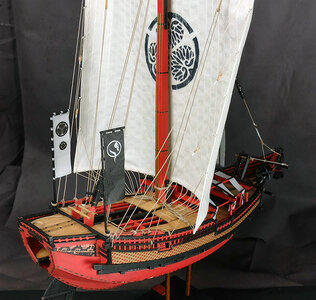A new shipyard opens !
A little history...
Two types of sailing ships, once used to transport taru (casks) of sake from Kamigata (上方, the present Keihanshin area of Kyoto, Osaka and Kobe) to Edo (now Tokyo). Until the Meiji period (1868-1911), movement from the center of the capital Kyoto to other areas was described with the verb kudaru (下る, to descend).
For this reason, sake sent from Kamigata to Edo was known as kudari-zake (下り酒). Sake began to be shipped "down" in the 1600s, when it was sent overland by beast of burden, but it soon became necessary to switch to sea transport using sail in order to meet the increasing sales volumes.
In the early 1600s, more and more shipping agents were established in Osaka, and they transported Nada sake and other goods to Edo on their distinctive higaki kaisen crafts. These boats had woven bamboo railings (higaki) along the gunwales, to prevent loaded sake barrels from slipping on the unstable decks and to increase the loading capacity.
Because these higaki kaisen were designed for maximum loads without much thought for safety, sinking was an ever-present danger. Moreover, faking a shipwreck to allow the illegal sale of the supposedly lost cargo was commonplace. The trade became more and more lawless and in the early 1700s a new type of ship, entirely devoted to the transport of sake, appeared. These were called taru kaisen (樽回船, kaisen meaning a cargo ship). They were fast, stable, and elegant Japanese-style sailing craft, some of which by the end of the shogunate in the mid-19th century had grown to sizes capable of carrying 3,000 barrels.
In the late 1800s, they were supplanted by the arrival of Western-style sailboats and steamers, but their contribution to Nada sake sales was enormous until then.




The project

The kit comes from Japan directly from the main distributor of WoodyJoe kits: Zootoys.jp. The scale is 1/72 and the wood is totally from Japanese species. It is perfectly designed and cut, with small numbered bags for each group of parts and a very illustrated assembly guide... but in Japanese for the texts! Google Trad is therefore mandatory to avoid making too much bullshit !
Of course, there is on La Royale, an excellent topic about this kit with the exceptional construction of Marcjp. By the way, if you want very precise details of the assembly of this kit, I recommend you to refer to it : I won't do better !
But maybe different for the final simply... Cool
The first pictures of the construction site :






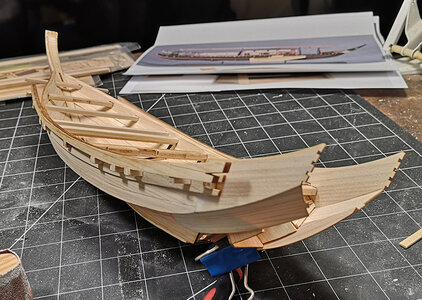

Well, of course, those who know me a bit may wonder what I'm going to be able to transform in such a well designed and framed Japanese kit...
I think that visually, I will try to get closer to the representations of the period paintings. But for the moment, it's a matter of building a boat that is culturally quite far from our western habits. So, the decoration will come later to make my Higaki Kaisen! (even if I have to anticipate a little the result...).
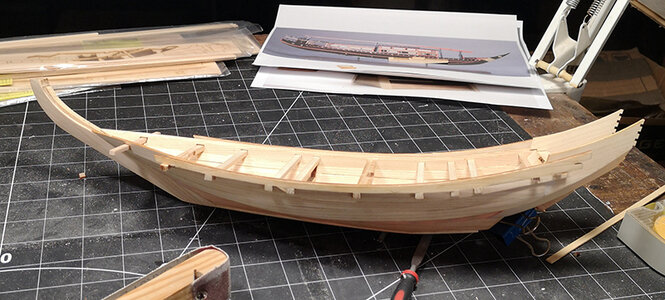
A little history...
Two types of sailing ships, once used to transport taru (casks) of sake from Kamigata (上方, the present Keihanshin area of Kyoto, Osaka and Kobe) to Edo (now Tokyo). Until the Meiji period (1868-1911), movement from the center of the capital Kyoto to other areas was described with the verb kudaru (下る, to descend).
For this reason, sake sent from Kamigata to Edo was known as kudari-zake (下り酒). Sake began to be shipped "down" in the 1600s, when it was sent overland by beast of burden, but it soon became necessary to switch to sea transport using sail in order to meet the increasing sales volumes.
In the early 1600s, more and more shipping agents were established in Osaka, and they transported Nada sake and other goods to Edo on their distinctive higaki kaisen crafts. These boats had woven bamboo railings (higaki) along the gunwales, to prevent loaded sake barrels from slipping on the unstable decks and to increase the loading capacity.
Because these higaki kaisen were designed for maximum loads without much thought for safety, sinking was an ever-present danger. Moreover, faking a shipwreck to allow the illegal sale of the supposedly lost cargo was commonplace. The trade became more and more lawless and in the early 1700s a new type of ship, entirely devoted to the transport of sake, appeared. These were called taru kaisen (樽回船, kaisen meaning a cargo ship). They were fast, stable, and elegant Japanese-style sailing craft, some of which by the end of the shogunate in the mid-19th century had grown to sizes capable of carrying 3,000 barrels.
In the late 1800s, they were supplanted by the arrival of Western-style sailboats and steamers, but their contribution to Nada sake sales was enormous until then.




The project

The kit comes from Japan directly from the main distributor of WoodyJoe kits: Zootoys.jp. The scale is 1/72 and the wood is totally from Japanese species. It is perfectly designed and cut, with small numbered bags for each group of parts and a very illustrated assembly guide... but in Japanese for the texts! Google Trad is therefore mandatory to avoid making too much bullshit !
Of course, there is on La Royale, an excellent topic about this kit with the exceptional construction of Marcjp. By the way, if you want very precise details of the assembly of this kit, I recommend you to refer to it : I won't do better !
But maybe different for the final simply... Cool
The first pictures of the construction site :








Well, of course, those who know me a bit may wonder what I'm going to be able to transform in such a well designed and framed Japanese kit...
I think that visually, I will try to get closer to the representations of the period paintings. But for the moment, it's a matter of building a boat that is culturally quite far from our western habits. So, the decoration will come later to make my Higaki Kaisen! (even if I have to anticipate a little the result...).






